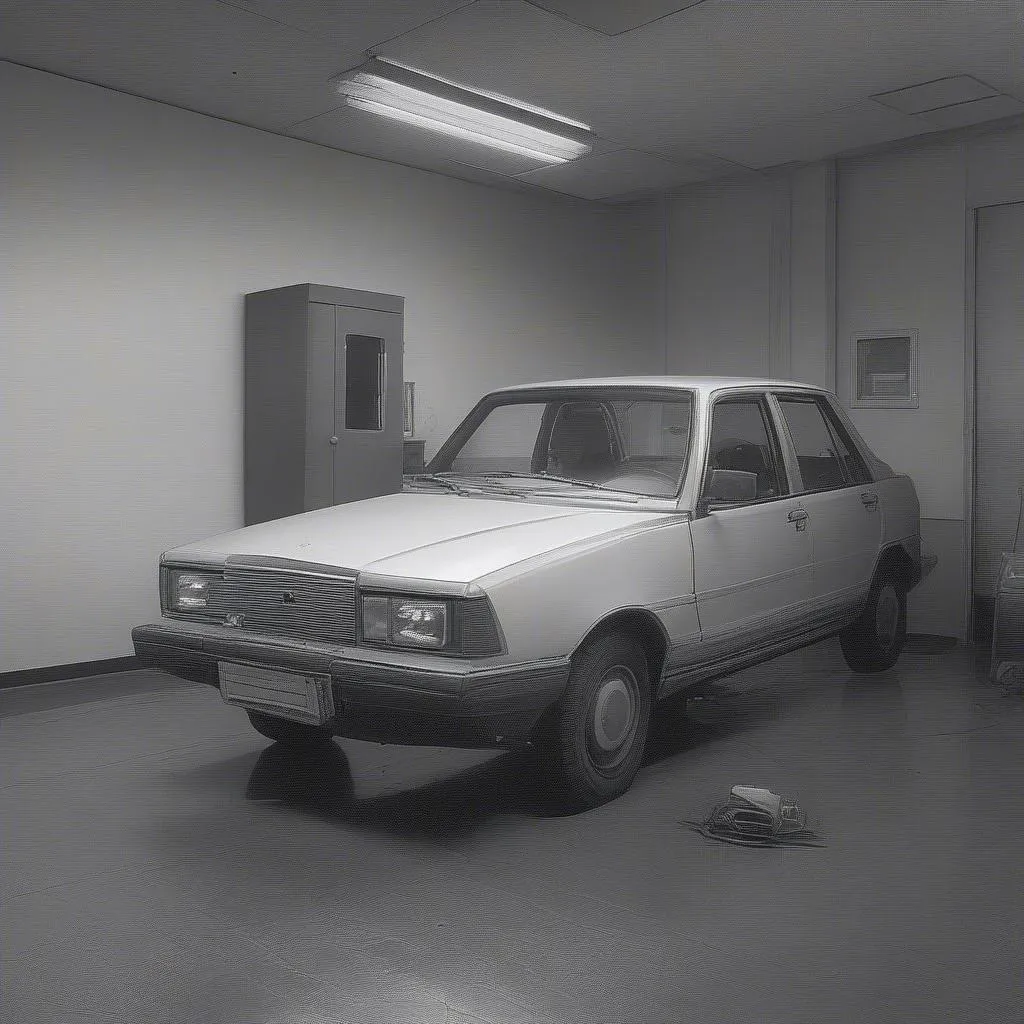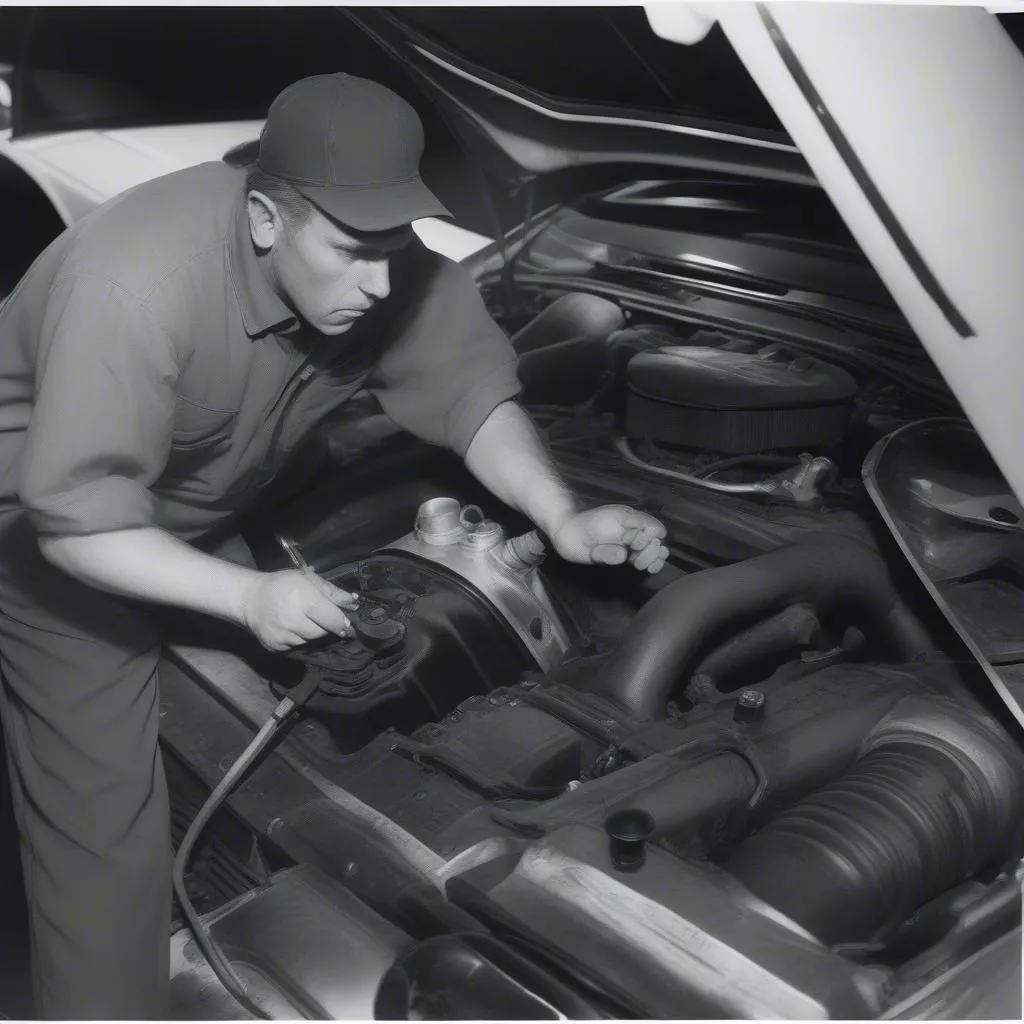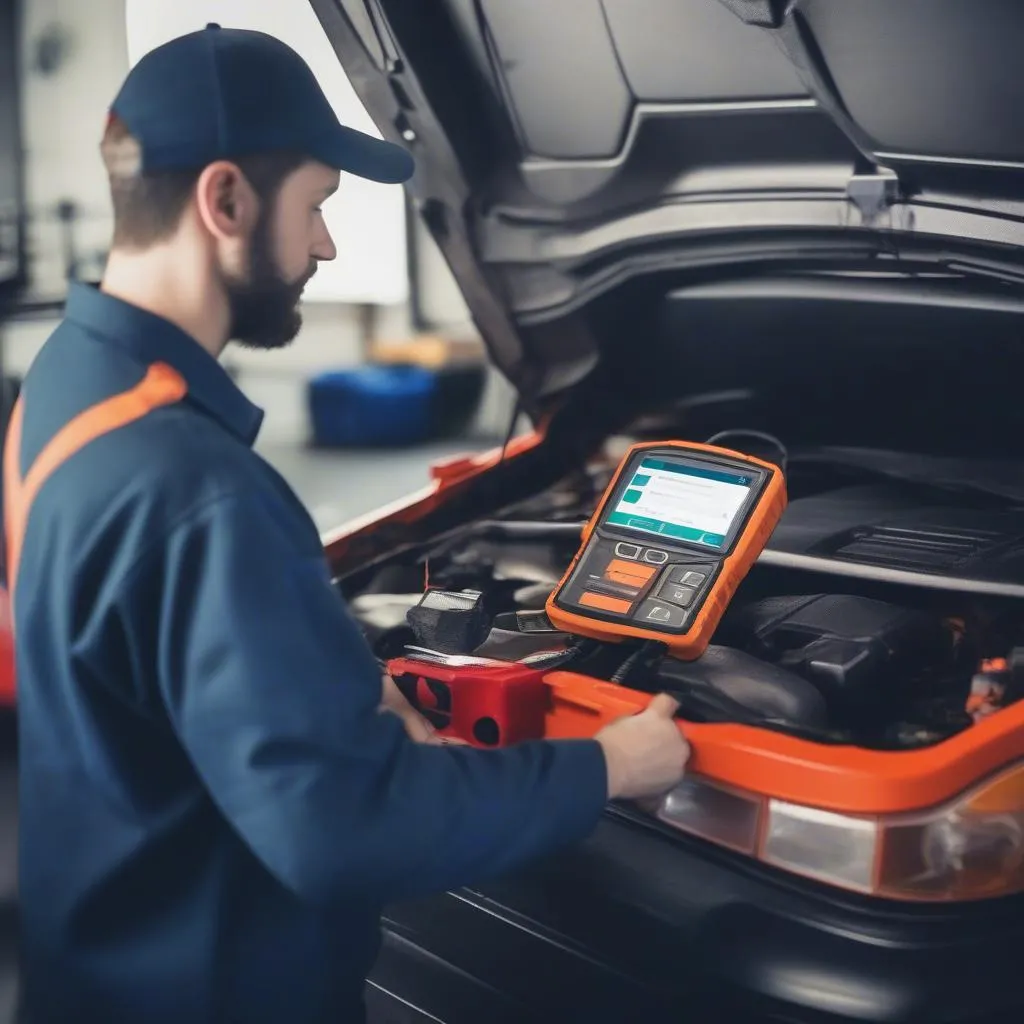Imagine this: You’re cruising down the highway, enjoying the open road, and suddenly, your car’s engine light starts flashing. You pull over, check the engine compartment, and see nothing out of place. Then, you connect your OBD2 scanner and it displays the dreaded P0175 code. What now? Don’t worry, you’re not alone! Many car owners encounter this code, and it’s not as intimidating as it might seem. This article will guide you through the meaning of the P0175 OBD code, its possible causes, symptoms, and what you can do to fix it.
What is P0175 OBD Code?
The P0175 OBD code indicates a “System Too Rich (Bank 1)” error in your vehicle’s engine. It’s a critical code that signals an imbalance in the air-fuel mixture going into your engine. Think of it like a recipe for a perfect cake – if you have too much flour or too much sugar, the cake won’t turn out right. Similarly, the P0175 code means there’s too much fuel entering your engine’s combustion chambers, which can negatively impact your engine’s performance and fuel efficiency.
Understanding the Code: A Deeper Dive
From a Mechanic’s Perspective
A mechanic would immediately understand that this code points to an overly rich fuel mixture. This implies that the engine control unit (ECU) is receiving incorrect feedback about the air-fuel ratio, potentially leading to misfiring, reduced power, and increased fuel consumption.
From an Engineering Perspective
The P0175 code is a result of a discrepancy between the air-fuel ratio the engine needs and the one it’s receiving. The ECU uses sensors, such as the oxygen sensors, to monitor this ratio. When the oxygen sensor detects an excessively high level of fuel in the exhaust gases, it signals the ECU to adjust the air-fuel mixture. However, if the ECU is unable to achieve the ideal ratio, the P0175 code is triggered.
From an Economic Perspective
This code can be a serious financial concern. An overly rich fuel mixture means your engine is burning more fuel than it needs. This translates to decreased fuel economy, leading to higher expenses at the pump. Moreover, if the issue isn’t addressed promptly, it can lead to significant engine damage, which requires costly repairs.
What Causes the P0175 OBD Code?
Several factors could trigger the P0175 code. Here are some of the most common:
1. Faulty Oxygen Sensor (O2 Sensor)
The oxygen sensor is a crucial component that measures the amount of oxygen in your engine’s exhaust gases. A malfunctioning O2 sensor can provide inaccurate readings to the ECU, leading to the P0175 code.
2. Clogged Fuel Injectors
Fuel injectors are responsible for delivering precisely measured amounts of fuel into the engine’s combustion chambers. If the injectors are clogged, they may not be able to deliver the correct fuel quantity, resulting in a rich fuel mixture.
3. Vacuum Leaks
Vacuum leaks can disrupt the air flow to the engine, causing an imbalance in the air-fuel ratio. For example, a cracked or damaged intake manifold hose could introduce unmetered air into the system, leading to a rich mixture.
4. Faulty Mass Airflow Sensor (MAF Sensor)
The MAF sensor measures the amount of air entering the engine. A faulty MAF sensor can send incorrect readings to the ECU, causing it to miscalculate the required fuel amount.
5. Problems with the Fuel Pressure Regulator
The fuel pressure regulator controls the amount of fuel delivered to the engine. If it malfunctions, it may deliver too much fuel, leading to a rich fuel mixture.
6. Faulty Fuel Pump
A fuel pump that’s failing or operating inefficiently can deliver too much fuel, resulting in a rich mixture.
7. A Damaged Fuel Line
A leak in the fuel line can introduce air into the fuel system, affecting the fuel pressure and leading to a rich mixture.
Symptoms of P0175 OBD Code
Besides the illuminated check engine light, here are some common symptoms associated with the P0175 code:
- Rough idling: The engine may idle erratically or stumble, indicating an imbalance in the air-fuel mixture.
- Decreased fuel economy: As the engine burns more fuel than necessary, you may notice a decline in your vehicle’s gas mileage.
- Black smoke from the exhaust: This is a clear sign of an overly rich fuel mixture.
- Reduced engine power: The engine may feel sluggish or lack acceleration due to the incorrect air-fuel mixture.
How to Fix the P0175 OBD Code
Fixing the P0175 code requires diagnosing the underlying cause.
1. Diagnosing the Problem
- OBD2 Scanner: Use an OBD2 scanner to check the code and retrieve any other related diagnostic information.
- Visual Inspection: Thoroughly inspect the engine compartment for any visible signs of leaks, damaged hoses, or loose connections.
- Testing Sensors: Test the oxygen sensors, MAF sensor, and fuel pressure regulator using a multimeter or a dedicated testing tool.
- Fuel Injector Inspection: You can remove the fuel injectors for inspection or perform a fuel injector cleaning service.
2. Replacing Components
Once the root cause is identified, you’ll need to replace or repair the faulty component. For example, if a faulty oxygen sensor is found to be the culprit, you’ll need to replace it with a new one.
3. Professional Help
In some cases, troubleshooting and repairing the P0175 code can be complex. It’s always best to consult with a qualified mechanic, especially if you’re not familiar with automotive repairs. They can provide a comprehensive diagnosis and recommend the necessary repairs.
Frequently Asked Questions
Is the P0175 Code a Serious Problem?
Yes, the P0175 code can be a serious problem if left unresolved. An overly rich fuel mixture can lead to decreased fuel economy, engine damage, and other performance issues.
What Happens if I Ignore the P0175 Code?
Ignoring the P0175 code can lead to various problems, including:
- Increased fuel consumption: Your car will burn more gas than it needs, costing you more at the pump.
- Engine damage: An overly rich fuel mixture can lead to engine damage, including fouled spark plugs, carbon buildup, and even damaged catalytic converters.
- Reduced engine performance: Your car may experience sluggish acceleration and reduced power output.
- Emission failures: The P0175 code usually indicates a problem with your car’s emission system, which can cause it to fail emissions testing.
How Much Does it Cost to Fix the P0175 Code?
The cost of fixing the P0175 code can vary depending on the underlying cause. Replacing a faulty oxygen sensor can cost anywhere from $100 to $300, while repairing a vacuum leak or replacing a fuel pressure regulator could be more expensive.
Can I Fix the P0175 Code Myself?
Depending on your experience and skill level, you may be able to fix the P0175 code yourself. However, it’s recommended to consult with a professional mechanic if you’re not confident in your abilities.
How Can I Prevent the P0175 Code from Occurring?
While it’s impossible to completely prevent the P0175 code, you can minimize the risk by following these tips:
- Regular Maintenance: Keep up with routine maintenance, including oil changes, air filter replacements, and spark plug changes.
- Fuel Injector Cleaning: Get your fuel injectors cleaned regularly to prevent clogging.
- High-Quality Fuel: Use high-quality fuel to minimize deposits and keep your fuel system clean.
- Inspect Hoses and Connections: Regularly inspect hoses and connections for any signs of damage or leaks.
Related Articles
- OBD Codes: A Comprehensive Guide
- How to Diagnose and Fix Common Car Problems
- Top 5 Reasons Why Your Car’s Engine Light is On
Need Expert Assistance?
Are you struggling with the P0175 code and need help getting your car back on the road? Don’t hesitate to reach out! Our team of expert mechanics is available 24/7 to provide support and guidance. Contact us via WhatsApp at +84767531508 to discuss your specific situation.
Conclusion
The P0175 OBD code is a signal that your car’s air-fuel mixture is out of balance. While it can be a concern, diagnosing and fixing the issue is achievable. By understanding the potential causes, symptoms, and troubleshooting steps, you can take control and ensure your car is running smoothly and efficiently. Remember, if you need help, don’t hesitate to seek professional advice. Let’s keep your car running like a well-oiled machine!
 Engine Light On
Engine Light On
 Mechanic Inspecting Car
Mechanic Inspecting Car
 OBD2 Scanner
OBD2 Scanner